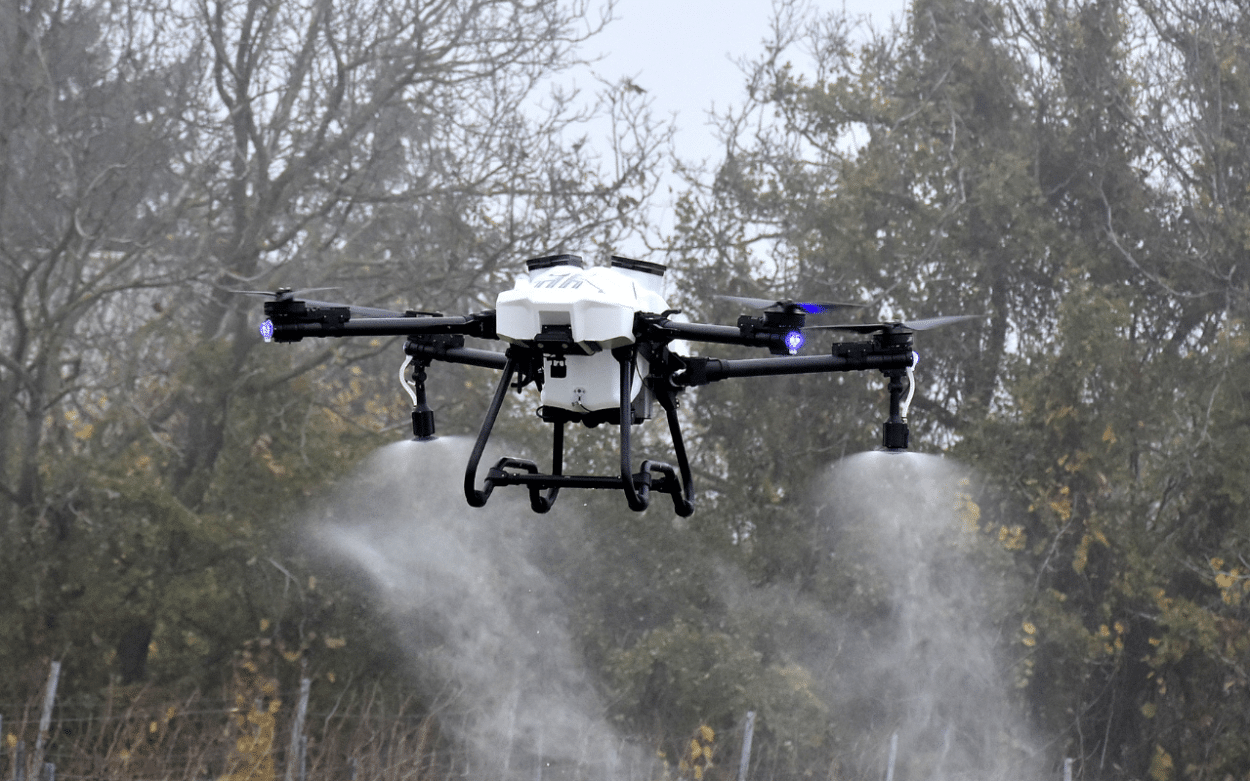Latest figures suggest the agricultural drone market is growing by around 24% per year and could be worth US$5.62 billion by 2027.
Many EU and global countries limit their legal use due to licensing issues, but investors are eager to invest in what promises to be a lucrative market. Authorities across the EU, UK, and other regions are creating new licenses, recognizing the benefits drones can offer to farmers.
Not only are they becoming a good asset to save labor on farms, but they can also be very efficient and precise when it comes to mapping out fields and applying fertilizers or pesticides. Not to mention their capability to access areas that are unreachable by wheeled vehicles.
Recently some drone tech development companies have introduced Unmanned Aerial Vehicles (UAVs), with larger capacities. We selected 3 of them.
01. ABZ Innovation L30
Based in Hungary, ABZ Innovation has developed its new L30 UAV with a 30-litre payload. It is three times the size of its other L10 model with a 10-litre capacity.
Aimed at bigger farms and vineyards the four rotors on the L30 easily help it carry 30 liters of pesticides, which it applies with two nozzles.
Powered by a 25000mAh battery, the L30 is designed for farms around 80 to 100 hectares in size and can spray up to 21 hectares per hour.
It comes with a four-battery pack set. To achieve maximum performance, one battery powers the drone, one is always charging and two are resting. Depending on the use, the batteries are expected to have 200 to 1,000 charge cycles.
The basic L30 drone weighs 29 kg without the battery which weighs an additional 9.4 kg. It has a maximum take-off weight of 72 kg and a maximum spraying altitude of 7m. A maximum working width of 9m is achievable with the L30 and it can also be fitted with a granular spreader.
ABZ Innovation says its drones use up to 50% less chemicals and 90% less water in crop management. This creates huge economic and environmental benefits for farmers, especially at a time when weather is highly unpredictable.

We spoke with Karoly Ludvigh, ABZ’s chief executive. For him
“With agricultural sectors facing significant challenges, our drone technology offers a practical solution, enhancing efficiency while adhering to the highest environmental standards. Global political tensions, supply issues, weather and food shortages no longer make traditional methods practical. Our advanced CDA spraying system, coupled with highly optimised airflow from the propellers, set our drones apart.”
He also added that their enhanced power train extends the life of our drones’ batteries.
“Our drones are capable of navigating on a centimeter level accuracy, providing an unmatched precision in plant protection.”
02. DJI Agras T50
The Chinese company DJI presents its T50 drone equipped with 137-centimetre blades. It provides a spreading capacity of 50 kg and a spraying load of 40 kg.
It incorporates the coaxial dual-rotor power system and adopts a split anti-torsion fixed structure with higher strength. Equipped with a dual atomization spraying system, the T50 also has a front and rear-phased array radar and binocular vision system.
This UAV achieves a spraying rate of up to 19 liters per minute using both nozzles. This rate can be increased to 28 gallons per minute for spraying fruit trees by incorporating two additional centrifugal nozzles.
03. Easynav.XYZ Digital Mapping
Many of the drones fly using precision RTK guidance offered by digital mapping systems. The obvious advantage of this guidance system is that drones can be highly accurate and efficient when conducting pesticide spraying or fertilizer spreading.
Swiss company EasyNav.XYZ is currently setting up its own EasyNav.RTK mapping system, powered by Geodnet, with centimeter accuracy. It says it ‘unlocks the unparalleled potential of Global Navigation Satellite Systems (GNSS).’
For Rouven Keller, CEO of EasyNav.XYZ,
“We are currently building the world’s largest RTK/GNSS reference network for all GNSS sectors with centimetre accuracy and 3,631 stations online. We are growing daily.”

Swiss company EasyNav.XYZ is currently setting up its own EasyNav.RTK mapping system, powered by Geodnet, with centimeter accuracy. (Credit: EasyNav.XYZ)
Source : E-Magazine

